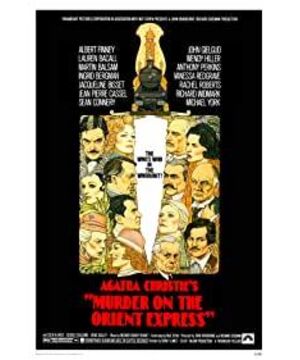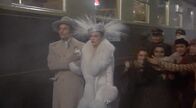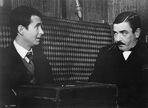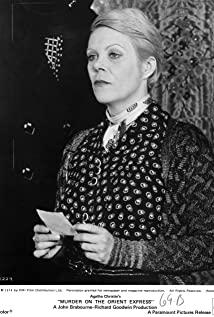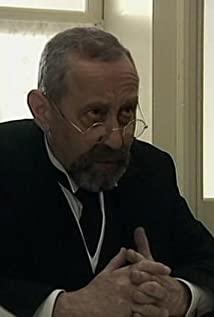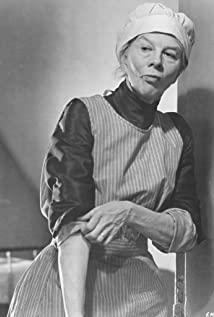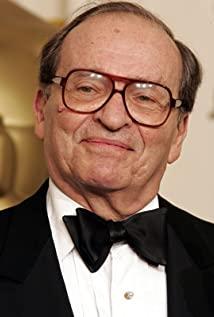This article was published on my public account of the same name, Baijia account and Toutiao account "Half the Clown". Welcome to follow and communicate.
Spoiler alert: This article contains spoilers for the 1974 and 2017 editions of Murder on the Orient Express. Readers of this article are advised to read the 1974 edition of Murder on the Orient Express first.
There are as many as 17 main characters in this film, as follows (the translation may differ):
Dead: Recht
Suspects (closer are listed together): McQueen (Recht's secretary); Bedos (Recht's footman); Colonel Absnow & Miss Debenham (two lovers); Mrs. Hebard; Count Andrey & Countess Andrey; Princess Dragomirov & Miss Schmidt (Princess Dragomirov's maid); Mr. Foscarelli; Olsen Miss; Pierre conductor; Hardman police
Investigators: Detective Poirot; Director Bianchi; Dr. Constantine
Due to the large number of characters, the depiction of the characters and the scheduling of the multiplayer scenes are the decisive factors for the success of the film. For these two points, the 1974 edition and the 2017 edition have different treatments. Compared with the 2017 version, the 1974 version of Murder on the Orient Express, directed by Sidney Lumet, has a better performance in character depiction and scene scheduling. This article also focuses on the latter's analysis.
Characterization
McQueen (Recht's secretary)
McQueen has been more or less mentally nervous throughout the interrogation process. For example, when the director Bianchi explained to the people in the compartment about the killing of Recht, he questioned Bianchi's failure to notify him immediately, and he stammered. For another example, when talking about "mother" with Poirot, his mood suddenly became hysterical.
In the 1974 version, McQueen played Anthony Perkins. The actor also played the role of a schizophrenic in Hitchcock's "The Cry". Coincidentally, in "The Cry", he is also a murderer with Oedipus feelings, which is consistent with the role in "Murder on the Orient Express." It may be for this reason. When I watched "Murder on the Orient Express" for the first time, I always felt like he was a murderer.
Anthony Perkins played the role of the frightened and disturbed secretary in Murder on the Orient Express very well, vividly reflecting the secretary's suppressed dissatisfaction and disgust towards Recht.
Bedos (Recht's footman)
A full English butler. Elegant and decent, polite and polite in his gestures; and composed, he didn't panic when Poirot pointed out his relationship with the Armstrong family.
Colonel Absnow & Miss Debenham
The role of Colonel Absnow is played by 007 actor Sean Connery. The character is righteous and brave, and often stands up for his beloved Miss Debenham. For example, during Poirot's strict interrogation of Miss Debenham, the colonel ignored everyone's obstacles and argued with Poirot. For another example, when Poirot started reasoning on the case and discussed Miss Debenham, he defended Miss Debenham and subconsciously put his hand on Miss Debenham's shoulder to give her a sense of security.
Mrs. Hubbard
Mrs. Hubbard is full of drama in this film. She lives next door to the deceased Recht. She is the main planner of the murder case. In the process of solving the case, she tried to give the criminals the wrong guidance. The specific scenes are as follows:
- Director Bianchi said that the murderer appeared in his room last night, and took his marriage history as an example, and firmly believed in his own judgment
- During the interrogation, a button dropped from the conductor’s clothes was provided to mislead Poirot’s judgment
- When Poirot interrogated Mr. Foscarelli, he appeared with the murder weapon he found
When Poirot pointed out her true identity, her eyes lost the firmness and decisiveness between them, and turned into dodge downwards and to the side.
Count Andrey & Countess Andrey
During Poirot's interrogation, the two showed obvious panic but pretending to be calm.
Princess Dragomirov & Miss Schmitt (Princess Dragomirov's maid)
Princess Dragomirov was the only person Poirot went to the room for interrogation. It is precisely this noble status that she has always shown disdain and domineering, but during the reasoning of the case, when the truth was revealed by Poirot's "evasion", she became flustered, smoking a cigarette with a shaking hand, pretending to be calm . (I have to say, the lines in this part are really well written)
As the princess's personal maid, Miss Schmidt also has a considerable role. During the interrogation, she had two details worthy of attention. One was in the princess's room, she tried to avoid the question of the maid's name; the other was in her own room, when Poirot pulled her out of the maid who might not be the mistress, her smile disappeared instantly. These two details paved the way for the unraveling of the mystery later.
Mr. Foscarelli
Mr. Foscarelli's interrogation process was quite interesting. He believed that Mr. Recht was involved in the gang incident, and vividly described his views, appearing to be a passer-by. To be honest, if it weren't for the final ending, I thought he was just a superfluous character, adding a comedy color to the film.
Miss Olsen
The role played by Ingrid Bergman allowed her to successfully win the Oscar for Best Supporting Actress. In the movie, Ingrid Bergman vividly portrays the nervous, dull and cowardly Miss Olsen. Miss Olsen opened her mouth and shut her mouth to God, very pious; always in tension and anxiety; she only speaks a little English, so she can't even speak well. In Miss Olsen’s interrogation, the director used a five-minute close-up lens to portray Miss Olsen’s image, and Bergman also used her superb acting skills to give a nearly perfect performance.
Pierre conductor, Hardman police
It is also a participant in the case, but not many scenes.
Poirot
Compared with Poirot’s blindly cool boring in the 2017 version, the 1974 version of Poirot is very rich and distinctive in appearance, manners, demeanor, accent and other aspects. It can be said that this role has been played alive. List a few snippets:
- When investigating Bedos (Recht's footman), Bedos told that the person in his upper bunk asked him what book he was reading, saying "Is't about sex?", and he answered "It' s not about six, it' s about 10:30", Poirot laughed
- When interrogating Mrs. Herbard, his “Yes or no” interrogation method conflicted with Mrs. Herbard’s attempt to explain carefully.
- He was emotional when confronted with Miss Debenham.
In contrast, the 2017 version of Poirot has always had this expression during the interrogation:
Director of Bianchi, Doctor Constantine
These two characters added the comedy effect of the film, and they desperately wanted to participate in the process of solving the case. After each interrogation, they were "he is the murderer".
Scene scheduling
There are two main multiplayer scenes in the film. This article will demonstrate the outstanding performance of the 1974 edition of "Murder on the Orient Express" in scene scheduling by way of comparison.
Scene 1: Director Bianchi explains the situation to passengers (1974 version: 41 minutes start; 2017 version: 41 minutes start)
In the 1974 edition, passengers were crowded in a small and noisy space, while in the 2017 edition, everyone took turns and quietly discussed their views. Compared with the 1974 version, the 2017 version lacks the sense of chaos caused by the outage of trains and murders.
A more detailed analysis of the scenes from the 1994 version of "Murder on the Orient Express":
- Miss Olsen: Interrupted the director of Bianchi and expressed distress and fear for the murder
- McQueen (Recht’s secretary): Stuttered and asked Bianchi that the director did not immediately notify him that Recht was killed.
- Mrs. Hubbard: Interrupted the conversation, and firmly believed that the murderer appeared in his room last night (in the middle, the Pierre conductor appeared and invited Bianchi to talk to Poirot, interrupting Mrs. Hubbard's description)
- Princess Dragomirov: Interrupting the conversation, expressing doubts and dissatisfaction with Mrs. Hubbard’s inference
- Others like Colonel Absnow have been watching
The dialogue is frequently interrupted and the multiple dialogues shown in the scene better reflect the sense of confusion.
Scene 2: Poirot’s Reasoning Case (1974 version: 95 minutes start; 2017 version: 87 minutes start)
Like scene one, the 2017 version lacks the conflict brought about by the narrow space, which is more like a one-man show of Poirot 1vs13. However, the interesting thing about the 2017 edition is that it pays tribute to the famous painting "The Last Supper".
In the 1974 edition, Poirot is more like a series of roles. Through clever dialogue and mirror movement, everyone’s criminal motives are naturally spread out one by one like flowing water, and the narrow sense of space makes the audience feel like it is on the scene, and deeply appreciate the increased tension of the criminal suspect in the small space. Sense and oppression.
Through the analysis of the 1974 edition and its comparison with the 2017 edition, we can see the importance of character portraying and scene scheduling for group play. Only when these two parts are done well, can an excellent movie be produced.
If you see this, please like and comment. If you want to learn more, please pay attention to my public account "Half the Clown".
View more about Murder on the Orient Express reviews


